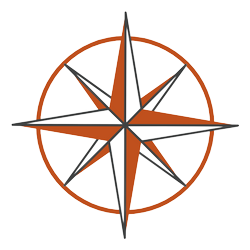You've got your shiny new telescope, and you can't wait to explore the night sky. But there's one more important accessory you need before you're ready to observe: a good quality eyepiece.
To pick the proper eyepiece, consider:
Your telescope's eyepiece is one of the most important accessories you'll need to purchase. This article will show you how to pick the proper telescope eyepiece for your needs.
The Size of Your Telescope's Aperture
The size of your telescope's aperture is important because it determines how much light your scope can gather. The more light your scope can gather, the better image you'll be able to see. A larger aperture also allows you to see fainter objects.
Today's telescopes come with chromed barrels that fit into the push-fit focusers of most scopes. Most have a diameter of 1¼ inches (31.7 millimeters). This is the standard size for astronomical refractors and Newtonian reflectors.
Some Schmidt-Cassegrain telescopes (SCTs) use a larger, two-inch focuser and require eyepieces with corresponding barrel sizes. SCTs usually have an aperture of eight inches (200 millimeters) or more.
The Type of Eyepieces Available
There are three main types of eyepieces:
- Plössl
- Erfle, and
- Orthoscopic.
Plössl eyepieces are the most popular type. They have four lenses, and their design creates a wide field of view with little distortion around the edges. Plössl eyepieces come in a variety of focal lengths and can be used for various purposes such as planetary or deep-sky observing.
Erfle eyepieces have five lenses and offer a wider field of view than Plössl eyepieces. They're well-suited for deep-sky observing, but the increased number of lenses can cause some distortion around the edges of the field.
Orthoscopic eyepieces have four lenses and are designed to provide a very sharp image with little distortion. They're often used for planetary observing, but they can also be used for deep-sky objects.
Your Desired Field of View
The field of view is the width of the area you can see through the eyepiece. It's measured in degrees, and the larger the number, the wider the field. The field of view is also affected by the eyepiece's focal length.
A shorter focal length will result in a wider field of view, while a longer focal length will give you a narrower field. The type of eyepiece you choose will also affect the field of view. Plössl and Erfle eyepieces have a wide field of view, while Orthoscopic eyepieces have a narrower field.
A wide field of view is good for observing large objects like nebulae and star clusters. A narrower field is better for planetary observing when you want to see as much detail as possible.
The Amount of Magnification
The amount of magnification you want to achieve is also important. Higher magnification will allow you to see more detail, but it will also make the image more difficult to keep steady.
A focal length is a distance from the primary lens/mirror to where it forms an image of a distant object, as measured in millimeters. This figure is usually stamped or etched nearby to the eyepiece focuser and usually ranges between 400 and 3000 millimeters, depending on the aperture and type of telescope.
Eyepieces are usually designated by their focal length as well, like 10mm, 20mm, or 25mm. To determine your telescope's magnification based on its specific measurements, use this formula:
Magnification = Focal Length of Telescope (mm) / Focal Length Of Eyepiece (mm)
In general, the shorter the focal length of the eyepiece, the wider its field of view will be. The longer the focal length, the narrower the field but with more magnifying power.
Conclusion
Choosing the proper telescope eyepiece is important if you want to get the most out of your telescope. Consider the type of eyepiece, the focal length, and the field of view when making your decision. With a little bit of research, you'll be able to find the perfect eyepiece for your needs.





